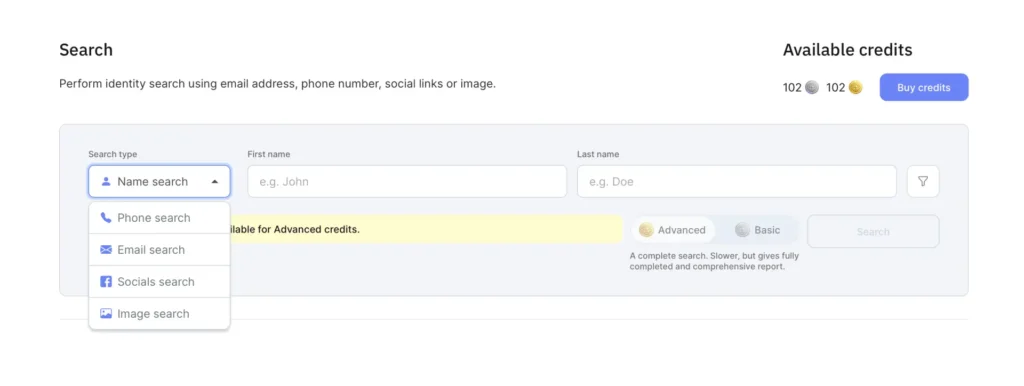Quite often, we are asked the question of how to properly look for a job in OSINT. And since, in most cases, we give the same advice, we decided that it would be useful to write an article, “How to get an OSINT job.” It will help all beginners who are just starting their journey in OSINT and do not yet know where to start. Of course, there are no universal ways, and we do not pretend to be the ultimate truth. Nevertheless, our experience is relevant, and following these tips will help you find a job in OSINT a little easier.
Practice
Some employers require the candidate to have experience with various intelligence methods and technologies, but even if you do not have it, don’t despair. You can fill this gap with practice and gain that experience yourself. The network has a large number of training courses, tasks, and programs with which you can pump skills.
For example, you can conduct simple OSINT investigations using the X-Ray Contact tool. This instrument doesn’t require special software, resources or experience. Just try completing person of interest research by inserting someone’s name, contacts, photo, phone number or social media link in the “Platform” bar. This method will show you the gist of what information you can collect with ease from open sources.

Keep your non-OSINT strengths in mind and think about how you can apply them to intelligence. For example, you structure information well. Take some process, break it down into blocks, and create a clear instruction or guide. Love to write? Give a step-by-step description of a new technique you’ve learned, or write a feature article on a research topic you’ve done.
Don’t focus on niche tools that might lose their relevance. Take a broader view and focus on methods and processes that you can apply without worrying about losing value.
And probably the last thing worth mentioning here is getting a good foundation in research and traditional intelligence. This knowledge will help you stand out from the crowd. To understand the exploration cycle, dive into history and read more about historical cases and examples. They are universal and easily applicable to other types of reconnaissance:
- GEOINT – geospatial intelligence is information about human activities on Earth, obtained as a result of the use and analysis of images and geospatial information.
- HUMINT is a social engineering technology for business intelligence. The key parts of which are: psychological attitude towards contact with the source of information, planning and working out the legend, etc.
- TECHINT – Technical intelligence is designed primarily to counter technological surprise.
Reading literature will broaden and add expertise to your investigations, which will no doubt set you apart from the rest as a stronger candidate.
What to read:
Intelligence Cycle (CIA)
Open Source Intelligence Guide (OSINT) (Michael Hayden)
Criminal Intelligence Analyst’s Guide (UNODC)
Open Source Intelligence (US Army)

With practice, you will develop materials and simultaneously hone your OSINT skills. After a while, you will already have something to show in your portfolio. It can be a description of a technique, a strategy, a diagram, or a dossier. We recommend that you create some kind of data warehouse for yourself, which you will later indicate as an example of the work done. It can be a blog, website, or Github. So you kill two birds with one stone. Firstly, it will immediately show future employers that you are serious and ready to get to work, and secondly, you clearly confirm your skills.
Resources to help you:
Example articles in OSINT investigations (Bellingcat)
TraceLabs Capture the Flag Competition
Create your own OSINT bookmarklets (Sinwindie)
Creating an OSINT Resume

The first thing HR will ask for when you apply for a job is your resume. It will be better if you adapt it to each job you apply for. Do not forget to describe all the projects and skills you have received from the previous paragraphs and give links to Github, blog, or website. Feel free to list articles you’ve published, training you’ve taken, books you’ve read, and anything else that makes you look your best. What seems like a minor detail to you can be the deciding factor in a hiring decision.
Another tip, use the experience of people who already work in the OSINT field. Read and see what terms they use. See LinkedIn profiles or open resumes of applicants who have already found work in this field, as they already know the bird language that experienced professionals use.
Resources to help you:
How to Write a Resume that Passes the Artificial Intelligence Test (Katie Caprino)
LinkedIn OSINT Analytics Summary
Looking for an OSINT job

Now that you have the skills and resume, the last step is to find out who is willing to pay for your experience. Outside of the public sector, there are many companies that have “OSINT” jobs that involve data but do not include “OSINT” in the title. Therefore, we will focus on individual words and positions rather than sectors and companies that are worth paying attention to. Do not look for an exact match with the words OSINT or “Open Source”; approach the task creatively. Think about what skills a good OSINT specialist needs. Some of the basics are intelligence, investigation, geolocation, exploration, and analysis. It is these skills that are most often found in the requirements.
But our list is not a panacea; the world does not stand still, and if you notice a word that appears in the search results more often than others, then add it to the core of your search. Research analysts, intelligence analysts, investigators, and threat researchers are all related to OSINT. If you’re unsure which of the above roles you’d like to take on, the resources below will help you decide.
Don’t forget to check out job sites; there are really a lot of them right now. In the process, we recommend that you do not neglect your own security and think about what data you share with them. If you find a vacancy that suits you, check it out on the recruiting site and then contact the recruiter through the company’s website.
Resources:
How to land an OSINT job (Technisette)
Where to use OSINT in your business?\ (social links)
Consumers Guide for IC (DNI)
And finally, advice from a recruiter
References are the most effective source for candidates. We are sure that many job seekers have friends who work for some of the coolest companies, so we encourage you to contact them to let them know that you are available and open to offers.
Many companies that are looking for people with OSINT experience can open a job if they find an interesting candidate. That’s why it’s always a good idea to reach out to a recruiter and ask him/her if they’re looking for someone with your experience.
If you have a LinkedIn profile, you can enable this option https://www.linkedin.com/help/linkedin/answer/67405?lang=en and report it to recruiters.
We hope you find a job in OSINT using our tips!
